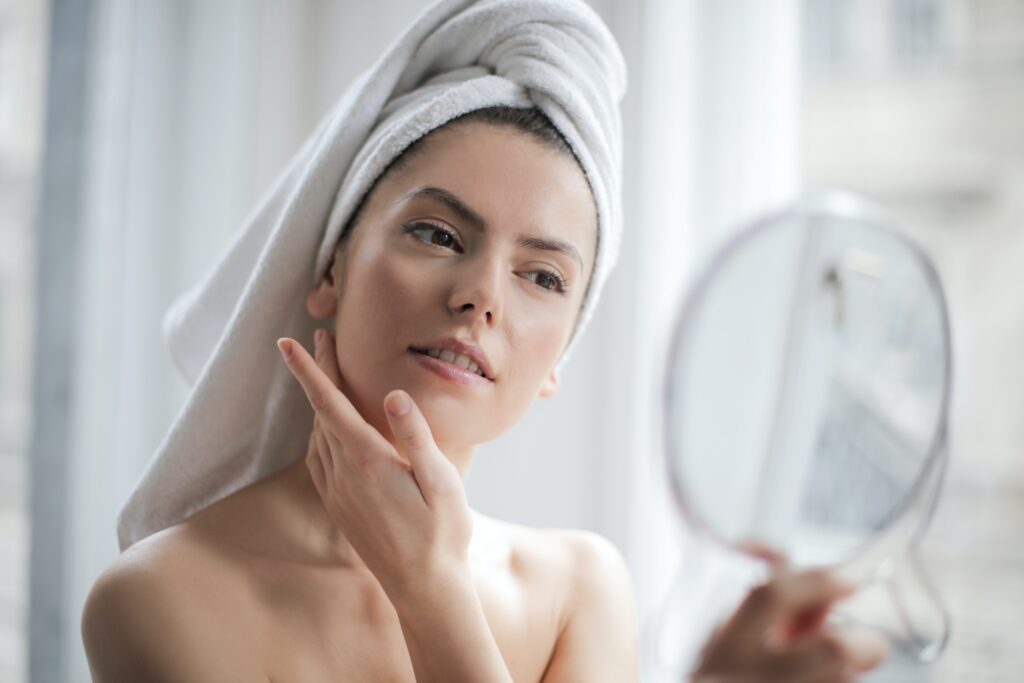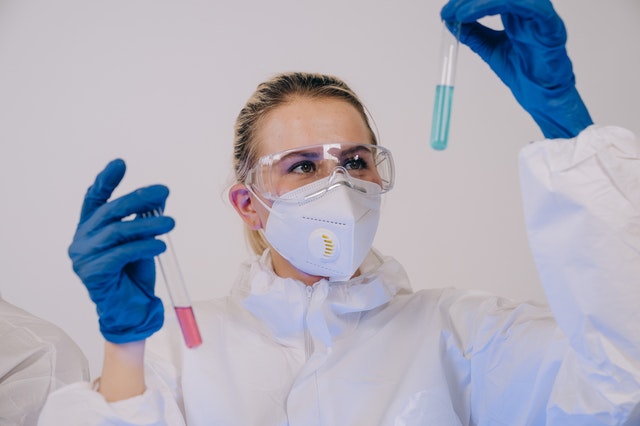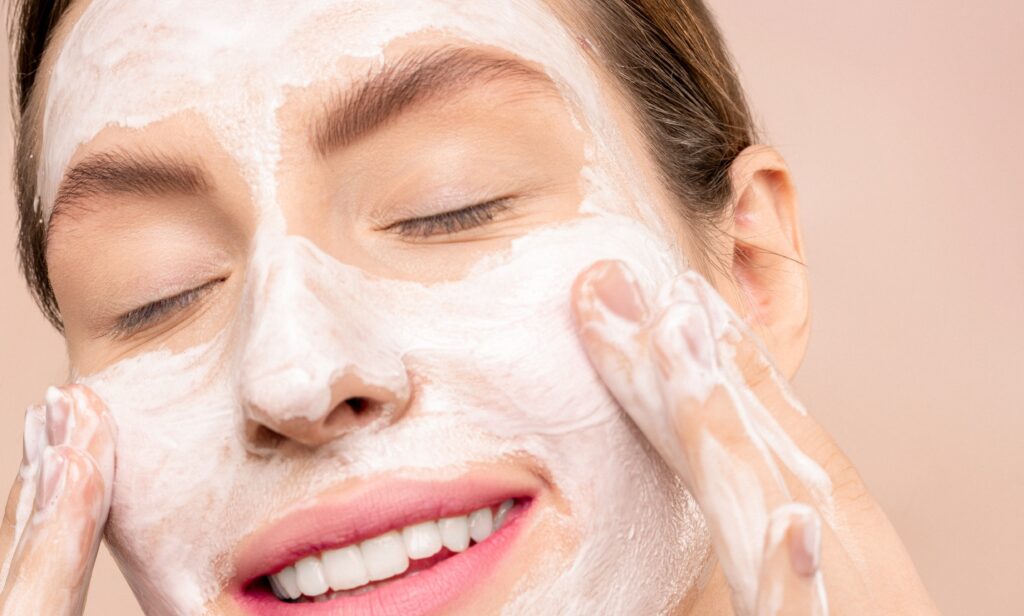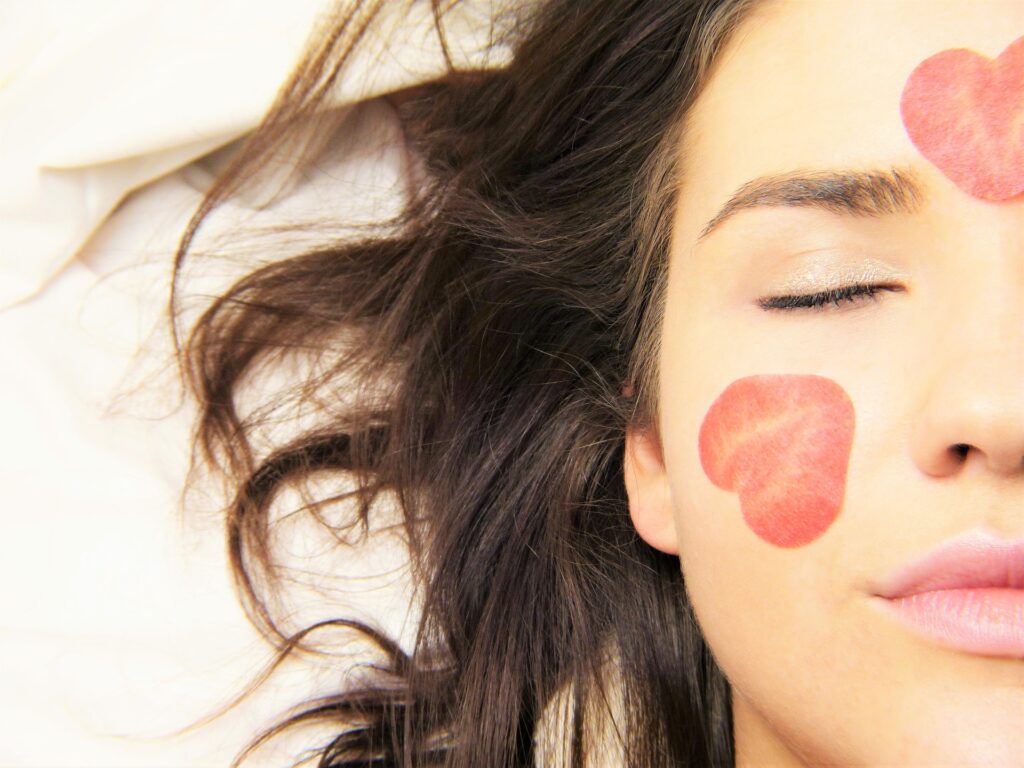how to get ride of the dull skin in a week naturally
According to Healthline:
Does your skin lack radiance or have a case of the blahs? If your skin is looking dull, you might be wondering what’s causing it and how you can create a healthy, vibrant glow.
In this article, we’ll take a closer look at what could be causing your dull-looking skin and offer nine dermatologist-recommended ways to say goodbye to lackluster skin for good.
What causes dull skin?
Your skin is your body’s largest organ. So, it makes sense that there are going to be times when your skin seems a bit under the weather. The trick is to figure out why and what you can do to change that.
Let’s look at some of the most common causes for dull-looking skin.
Dehydration
If you aren’t drinking enough water, it’ll likely affect the appearance of your skin. In fact, one 2015 study found a strong link between drinking enough water and having healthy skin.
Drinking plenty of water will help boost hydration from below your skin’s surface. Also, applying a hydrating face serum can help bind moisture in the upper layers of your skin.
Lack of moisturizer
Skimping on moisturizer, especially if your skin tends to be dry, can affect the health and vitality of your skin. Using a moisturizer twice a day can help hydrate your skin and protect the delicate top layer.
Buildup of dead skin cells
Your skin naturally sheds dead cells on a regular basis to make way for new cells. But sometimes the dead cells don’t shed as they should. Instead, they build up the surface of your skin. This can result in skin that’s dry, dull, flakey, and patchy.
Dryness
Dry skin can quickly take on the appearance of being dull and lifeless. This is especially true during the winter months, when the air is cold and dry, or if you live in a climate that has very low humidity.
Tobacco use
According to a 2010 review, smoking is an important environmental factor in premature skin aging.
The review found that smoking can impair the production of collagen and degrade the elastic fibers and connective tissue in your skin. It can also increase the oxidative stress in your skin cells. All of this can speed up the aging process and contribute to dull-looking skin.
Aging
Aging is an inevitable part of life. So is aging skin. And while you can’t control the aging process, you can adopt a skin care routine that helps provide your skin with the nourishment and hydration it needs to stay healthy and vibrant.
How to rejuvenate dull skin
We all deal with the occasional bout of dull skin. But if you’re regularly waking up to lackluster skin, you might be wondering what you can do to improve your complexion.
The good news? You have plenty of options.
1. Go gentle on your skin
“You want to make sure that you’ve completely removed your makeup and pore-clogging dirt from your day, but do it gently,” says Tsippora Shainhouse, MD, FAAD.
Her advice? Avoid harsh scrubs and drying soaps, which can cause skin irritation, tiny tears, redness, tightness, and flaky skin.
Instead, use a cleansing oil first to remove your makeup and sunscreen without stripping and damaging the top layer of your skin. Then, do a second wash with a gentle cleanser to remove the oil.
2. Avoid hot water
Going gentle on your skin also means no hot water or harsh soaps.
“Hot water can strip natural oils, which can cause dryness and irritation,” says Shainhouse. It can also cause superficial vessel dilation, which, Shainhouse says, can make the skin appear red, but only temporarily.
Instead, use lukewarm water when cleansing your face. Also opt for a moisturizing cleanser with ingredients like coconut oil, shea butter, or almond oil to help retain moisture.
3. Make exfoliation part of your routine
Regular exfoliation is key to a glowing complexion, according to New York City-based dermatologist, Hadley King, MD.
When dead skin cells build up on the outer layers of your skin, it can cause your skin to look dull, dry, and flakey, and can even clog your pores. Regular exfoliation can prevent this from happening.
According to King, exfoliation also helps to smooth and polish your skin, decreasing the appearance of fine lines and evening out your skin’s texture.
“Exfoliation helps expose a fresh layer of skin ready to retain hydration when moisturizer is applied,” she says. “This can help to plump up the skin, making it look younger, smoother, and healthier.”
King explains that over time, regular exfoliation can increase cell turnover and stimulate collagen production.
When adding exfoliation to your skin care routine, King generally recommends starting out by exfoliating twice a week and increasing the frequency as tolerated by your skin. You may need to be especially careful if your skin is overly dry or irritated.
Exfoliation can be either:
- Mechanical/physical. This can include exfoliating brushes, sponges, gloves, or scrubs.
- Chemical. This can include alpha hydroxy acids such as glycolic, lactic, tartaric, and citric acids, or beta hydroxy acids such as salicylic acid.
After exfoliating, apply a moisturizer right away to lock in moisture and protect the newly revealed skin cells.
4. Add a serum to your lineup
Face serums contain a high concentration of ingredients that help to brighten your skin, boost hydration, and diminish the signs of aging.
Because serums absorb quickly into your skin, you can apply them once or twice a day after cleansing.
Shainhouse recommends products with:
- vitamin C
- vitamin B3 (niacinamide)
- ferulic acid
- resveratrol
These ingredients have a strong antioxidant effect that can help prevent and undo collagen-destroying free radical damage.
Vitamin C also helps to fade hyperpigmentation or dark spots, giving your skin a more even-toned appearance over time.
Another key ingredient to look for is hyaluronic acid, which temporarily binds water in the skin’s superficial layers.
5. Make a date with a face mask
Treating yourself to a weekly face mask is another excellent tool to get your skin glowing.
Look for masks that contain:
- antioxidants
- hyaluronic acid
- shea butter
- other hydrating and brightening ingredients
In general, you can use a face mask 1 to 3 times per week, but this depends on the product and your skin type.
Make sure to read the directions before using a face mask on your skin.
6. Maximize your moisturizer
According to a 2017 reviewTrusted Source, moisturizing twice a day with the right product can help maintain your skin health and treat various kinds of dermatitis.
More specifically, says Shainhouse, the benefits of regularly using a moisturizer on your face include the following:
- Moisturizer can repair and protect the skin barrier. Tip: Look for ceramides in the ingredients.
- It can draw water into the epidermis to help plump up the skin. Tip: Look for hyaluronic acid and glycerin.
- It can prevent moisture loss. Tip: Look for dimethicone and petrolatum.
7. Stimulate collagen growth with a retinoid
“Retinoids, which are vitamin A derivatives, have been scientifically shown to stimulate collagen growth and normalize skin cell turnover,” says Shainhouse.
Retinoids help to exfoliate older skin cells and bring new, fresh skin cells to the surface. They also smooth down and thin out the top layer of cells. Ultimately, says Shainhouse, the light will reflect better off of this smooth surface, giving you a more natural glow.
To start, she recommends applying a retinoid treatment 2 nights a week and then increasing the frequency as your skin gets used to this ingredient.
8. Consider an in-office procedure
Your dermatologist is trained in some of the best procedures to improve the appearance of your skin.
According to Shainhouse, procedures like an IPL photofacial session can help minimize the appearance of brown spots. It can also help even out your skin tone and improve the light-reflectiveness of your skin. For best results, she recommends a once-a-year freshening session.
Fraxel lasers, another in-office treatment, help to resurface the skin.
“This procedure helps make skin smoother with fewer fine lines and more even pigmentation. This can make your skin look more glowy,” she says.
9. Wear sunscreen daily
Last, but certainly not least, wear sunscreen daily.
“This will help prevent UV-induced damage, including skin dyspigmentation, aging brown spots, and rough, dulling texture,” says Shainhouse.
The bottom line
Dull skin can be caused by dehydration, lifestyle choices, or cutting corners with your skin care routine. Fortunately, there are steps you can take to boost your skin’s natural radiance.
Exfoliating your skin, moisturizing twice a day, using a hydrating serum and face mask, and applying a retinoid product may all help replace dull-looking skin with a healthier, more vibrant glow.













